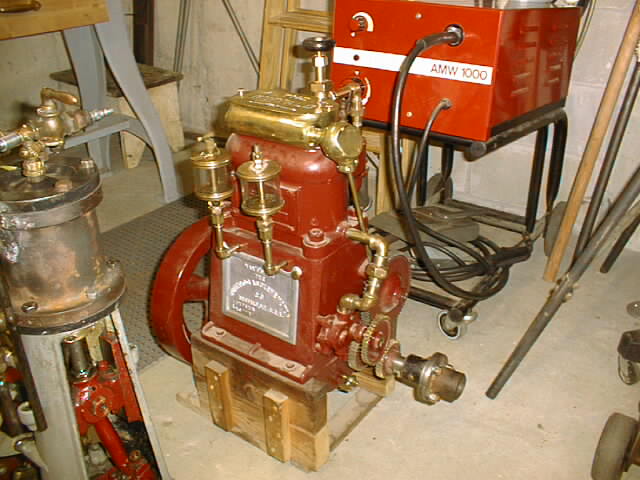|
| Author |
Message |
    
Roger Dyment
Member
Username: rogerd
Post Number: 11
Registered: 01-2010
| | Posted on Thursday, January 24, 2013 - 01:33 pm: | 




|
Question? I have a Buffalo 3hp marine engine 4 stroke. Have run it in my 1909 launch for the last 26 years. The crank pins are at 180 degrees. The timer contacts are at 90 degrees. I have always wondered what the theory was re the engine fireing on two successive upstrokes.It seems uneven to me although the engine has only had timer contacts and rotor replacement twice in all this time and it gets a lot of use every summer. I know there is tremendous tech. knowledge out there and I would appreciate any imput. I also have a 5hp Buffalo(not in a boat) and it has both crank pins on the same side of the crank and it is counter balanced and the contacts are at 180 degrees. Thanks Roger. |
    
Andrew Munns
Senior Member
Username: johnoxley
Post Number: 73
Registered: 04-2010
| | Posted on Thursday, January 24, 2013 - 03:23 pm: | 




|
180 degree cranks on 2 cylinder engines give better mechanical balance even if a rocking couple is created. Sheer mass of cast iron helps compensate. Kelvin Diesel K2 (6" bore x 9" stroke) are example. Exhaust is the double beat then gap.
Spacing of breaker point cams (or injection pump cams) is 90 degrees because camshaft is half engine speed (90 x 2 = 180).
Opposite design was British vertical twins. Much lighter design has cranks at 360 degrees. Firing order was 360 degrees but mechanical balancing becomes much trickier. |
    
Allen
Advanced Member
Username: allenf
Post Number: 33
Registered: 02-2011

| | Posted on Thursday, January 24, 2013 - 10:44 pm: | 




|
Aparently these motors are equipped with the jump spark or the make and break system of ignition.
http://www.oldmarineengine.com/history/Buffalo/Buffalo.html

You might find what your looking for here.
http://www.old-engine.com/magign.htm |
|
|
|


|


